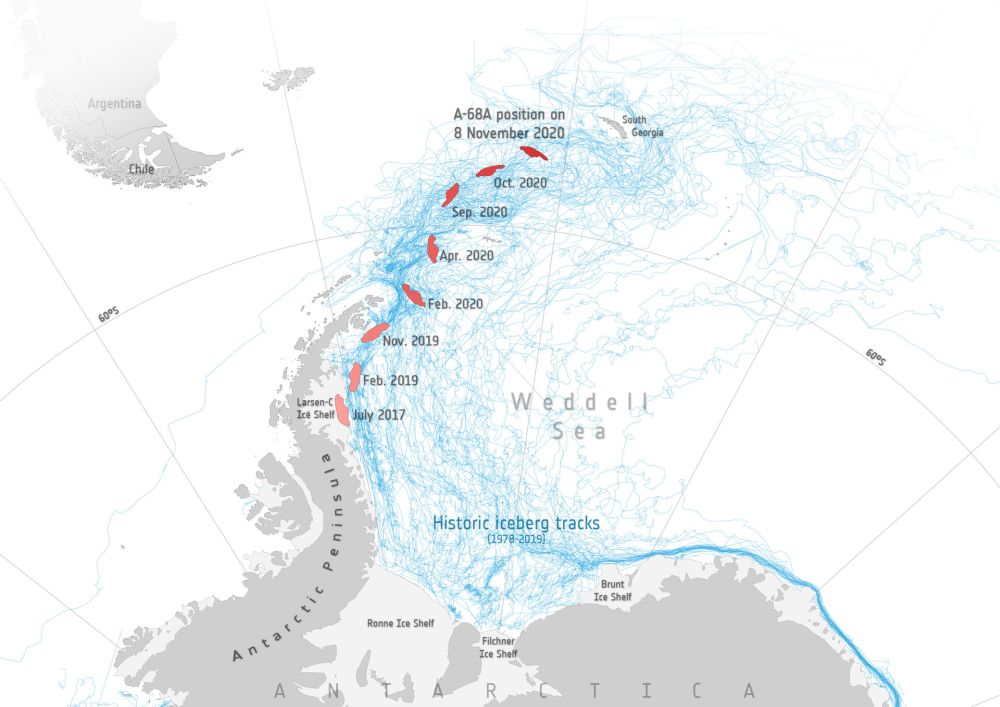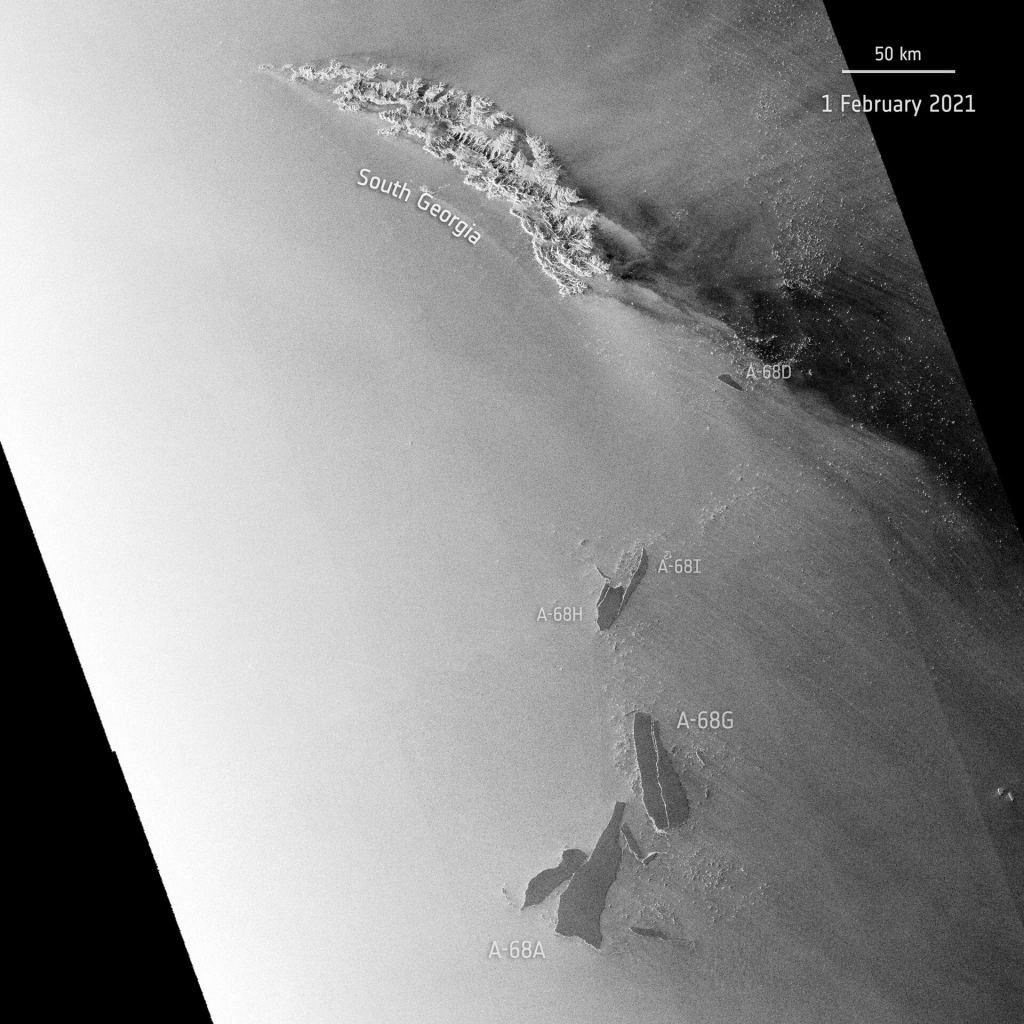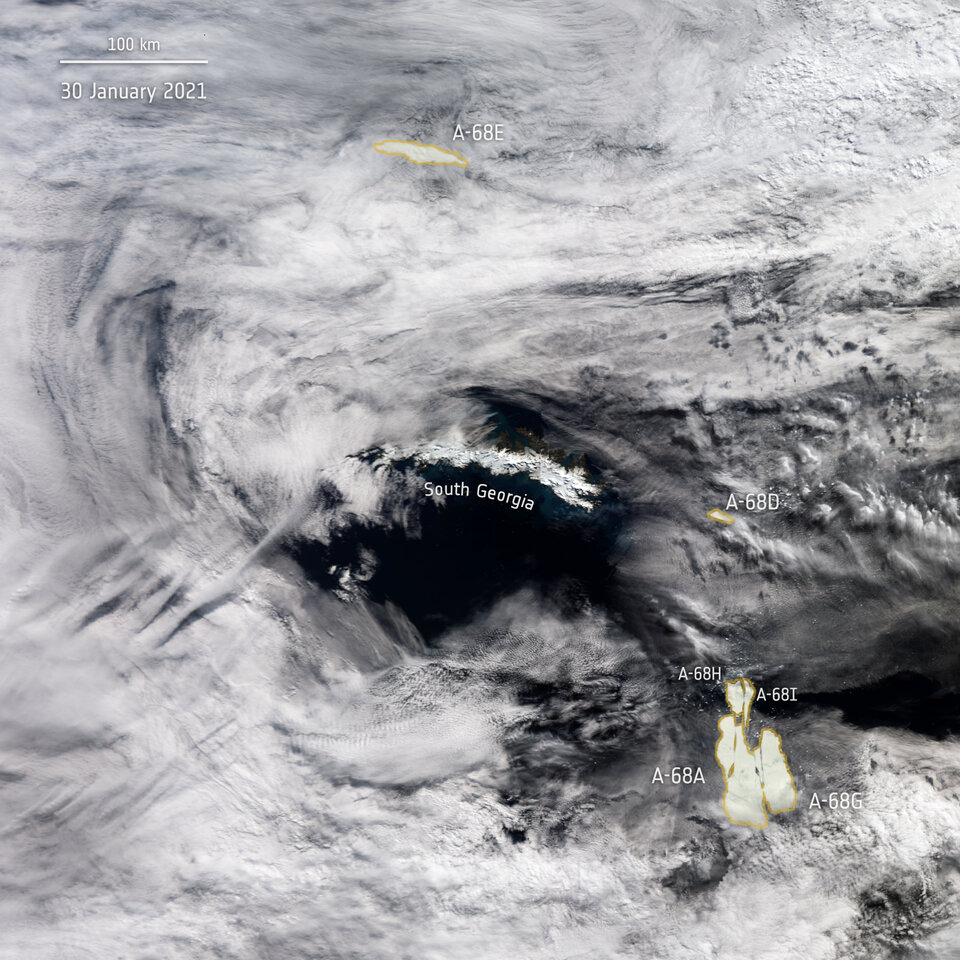It Looks Like Iceberg A-68A is Coming Apart
By Evan Gough
Iceberg A-68A, the massive frigid behemoth posing a threat to South Georgia Island, might be breaking into pieces. Satellite images from the European Space Agency showed large cracks forming in the iceberg.
Now it appears to breaking apart.
Iceberg A-68A’s journey started back in July 2017 when it broke off from Antarctica’s Larsen C ice shelf. Over the years, orbital eyes of satellites from both the ESA and NASA watched its drifting progress. Measuring 5,800 square kilometres (2200 sq. mi.) in surface area and estimated to weigh one trillion tons, the iceberg spent its first couple of years close to the Larsen ice shelf before currents swept it along.
It followed a well-trodden iceberg path away from Antarctica and toward South Georgia Island, a British Overseas Territory. It was only about 350 km (217 mi) away from the island and on a possible collision course by mid-November. And it wasn’t the first iceberg to be headed straight for the remote island.

In 1998 iceberg A-38 broke off from Antarctica. It eventually split into two large pieces named A-38A and A-38B. While A-38A drifted north and broke up in the ocean, A-38B headed straight for South Georgia Island. It eventually broke apart, but a huge chunk of it became grounded in shallow waters near South Georgia. It got stuck there, blocking access to wildlife feeding grounds. Many seal pups and penguin chicks died as a result.
So when A-68A was heading for South Georgia’s feeding ground, scientists were worried. For one thing, A-68B is much larger than A-38A and is almost as big as South Georgia itself. If A-68B were to become grounded near the island, it could’ve spelled disaster for wildlife.
Then in December, it looked like the massive iceberg was changing course. Currents were carrying it westward, away from the island. Hopefully, life would go on as normal for the wildlife of South Georgia Island.
Now, the news gets even better: cracks formed in A-68B, and now it looks like the massive iceberg has split into smaller ‘bergs.

The break-up began in December when a large chunk of ice named A-68D broke off. Then in late January, another chunk of ice named A-68G broke off. The loss of A-68G spelled the beginning of the end for the massive iceberg. Soon after, A-68H and A-68I broke away. They measured 20 km by 9 km and 30 km by 5 km, respectively.
Now, A-68A, which was at one time the largest iceberg, is greatly diminished. It measures about 60 km by 22 km now. And it’s moving away from South Georgia Island and is not expected to pose a threat. It’s about 225 km (140 mi) from the island and drifting south.
The images in this story come from the ESA’s Copernicus Sentinel satellites. Sentinel is a satellite program consisting of six satellites, with many more scheduled for the future. The program’s goal is to provide continuous global monitoring of Earth across multiple wavelengths. One of its primary goals is to monitor the effects of climate change.
The Sentinel satellites are just one part of the Copernicus program, which includes ground-based, seaborne, and airborne data collection. All Copernicus and Sentinel data is available free of charge at the Copernicus Open Access Hub.
More:
- Press Release: Is this the end of the A-68A iceberg?
- Website: NASA Global Ice Viewer
- Universe Today: An Iceberg the Size of South Georgia Island is on a Collision Course with… South Georgia Island
The post It Looks Like Iceberg A-68A is Coming Apart appeared first on Universe Today.

February 5, 2021 at 01:11AM
via Universe Today read more...

Post a Comment